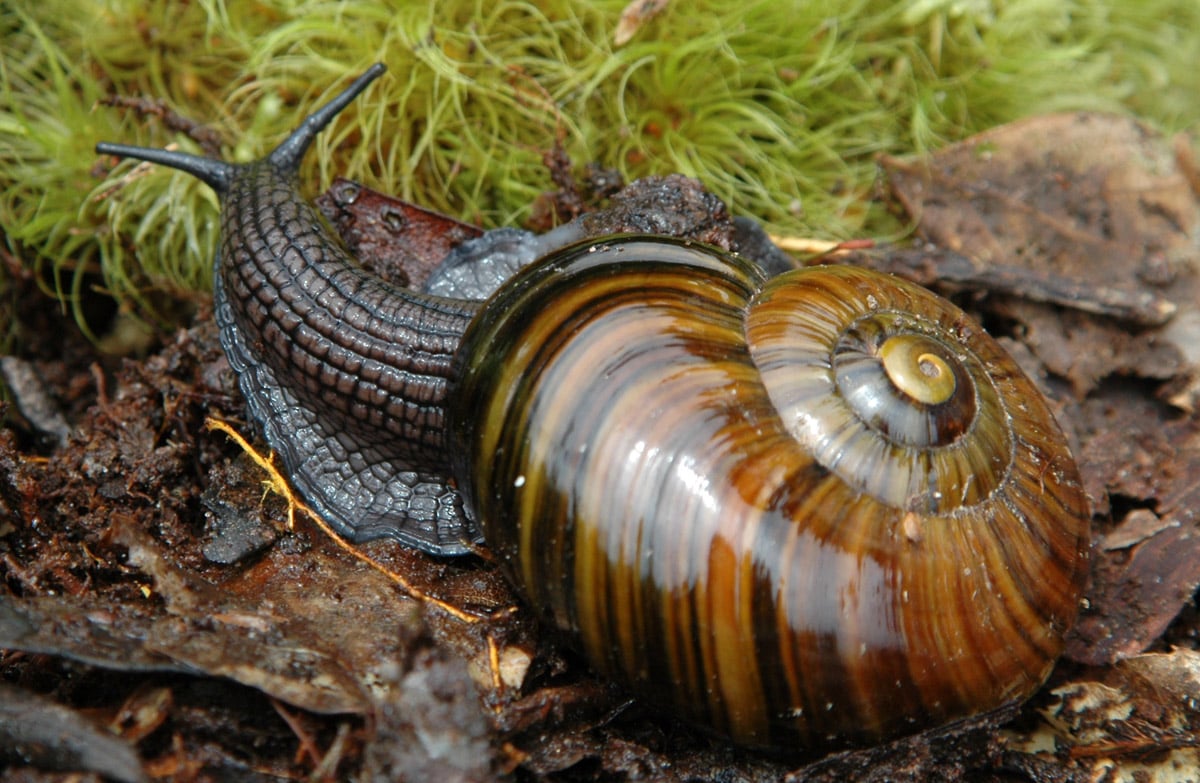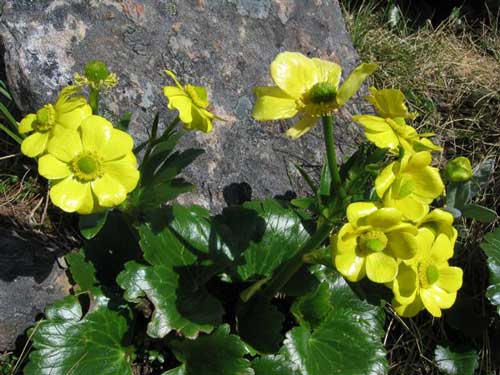
(The snail in this image from the Department Of Conservation is a powelliphanta patrickensis snail according to the image name.)
Powelliphanta snails are large snails native to New Zealand, and tend to be rather large. They come in a variety of sizes and colours.
Physical Description.
Powelliphanta are similar in appearance to absolutley massive garden snails. They can grow as big as a fist, which is absolutley awesome if you like snails, or terrifying if you don't. Some of the largest ones, Powelliphanta Superba Prouseorum, can measure in at 9cm across, and weigh 90 grams. For scale, that's roughly the weight of a Tui (or so theDepartment of Conservation says). Even though they look like garden snails, they're completley different to them, and are just as representative of NZ's unique evolutionary history as species like the kakapo, kereru, moa, or kiwi. The shells are thick, heavy, and glossy. They're a warm and rich red-brown, with a base of ochre yellow. Specific colours and patterns vary from species to species and place to place due to unique evolutionary adaptations to blend in with their surroundings.
Habitat
Powelliphanta are found basically everywhere in NZ, from sea level to alpine environments. They’re commonly found in forests and grasslands. there are about 20 species of giant land snails, distributes along the more western regions of both the north and south islands. the occur at any hight, from sea level to alpine environments. they follow the common trend of new zealand wildlife, that they’re more diverse in the south island than in the north. this is actually contrary to global trends, where usually diversity increases towards the equator. Powelliphanta is a common prey for birds and other predators, making these snails one of NZ's most threatened invertebrates.
Diet
One of the most interesting things about Powelliphanta snails is that they are carnivores, and eat slugs and worms. Most snails are herbivores, so Powelliphanta snails's unique diet is one of the many aspects that make them unique.
Reproduction
All powelliphanta snails are hermaphrodites, and therefore can mate with any other adult of the species. They lay eggs that are up to 12mm long, are pearly pink, and hard-shelled, resembling the eggs of a small bird.

Physical Description
The mountain buttercup is a species in the family Ranunculaceae. Their size can vary from a 60-50 cm tall herb, to a small plant that’s less than ten centimetres tall. its leaves are heart/kidney shaped, and are thick and leathery.
On larger plants, The leaves are 15-22 cm in diameter, while on smaller plants they're only 2-4 cm.
The plant has a multide of flowers on one branch, bright yellow and shiny with up to seven petals. In all species of buttercups, the flowers are highly toxic. Some plants in areas of marlborough can have up to 12 petals on a flower. On smaller variants, they can have only a single flower, like standard buttercups.
Diet
As many plants do, Ranunculus Insignis gets energy from photosynthesising using its dark green leaves.
Photosynthesis is the conversion of light, water, and carbon dioxide into energy using chlorophyll, the substance that gives leaves their green colour.
Distribution
The plant is found in subalpine and low alpine regions. In the North Island, it’s found from Mount Hikurangi southwards, and in the South Island from Nelson and Marlborough to roughly mid-Canterbury.
It occurs in shady areas of grassland, shrubfeild, herbfeild, and on sheltered bluffs and rock outcrops.
Reproduction
This plant flowers from October to December, late spring to summer.
The species is easily recognised by its bright flowers and bold green leaves. It’s considered an amalgamation of several other forms, commonly called R. Insignis, while the smaller versions were formerly regarded as distinct species.
Buttercups on the whole have flowers with both male and female parts. They rely on bees and other pollinators to reproduce, which is why they have bright yellow flowers.
Māori use of this Plant
Māori didnt use the plant because fresh buttercups, all types of them, are actually very poisonous if eaten! They contain an oil named Protoanemonin, which is what gives buttercups their yellow colouring. The oil causes excessive production of saliva due to irritating the mouth, and causes intestinal irritation that leads to diarrea. There haven’t been any documented cases of human death from protoanemonin (unless you count the fictional death in Toby Fox's UNDERTALE ) , however it will hurt livestock such as cows.
Sources
